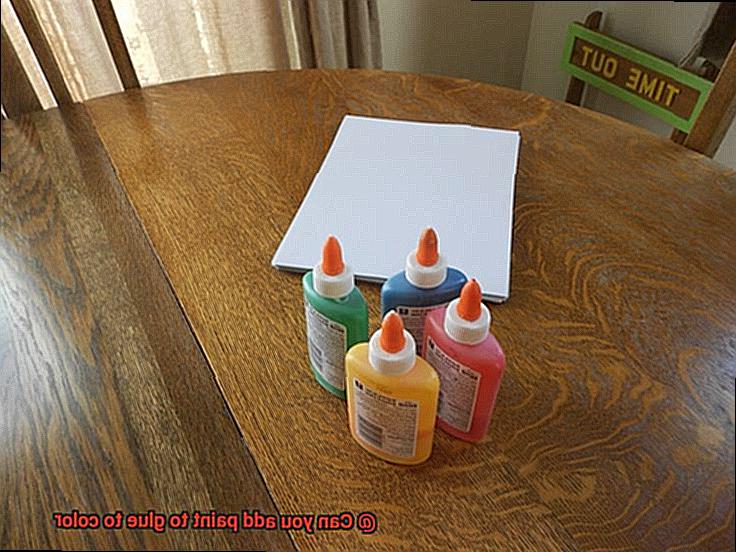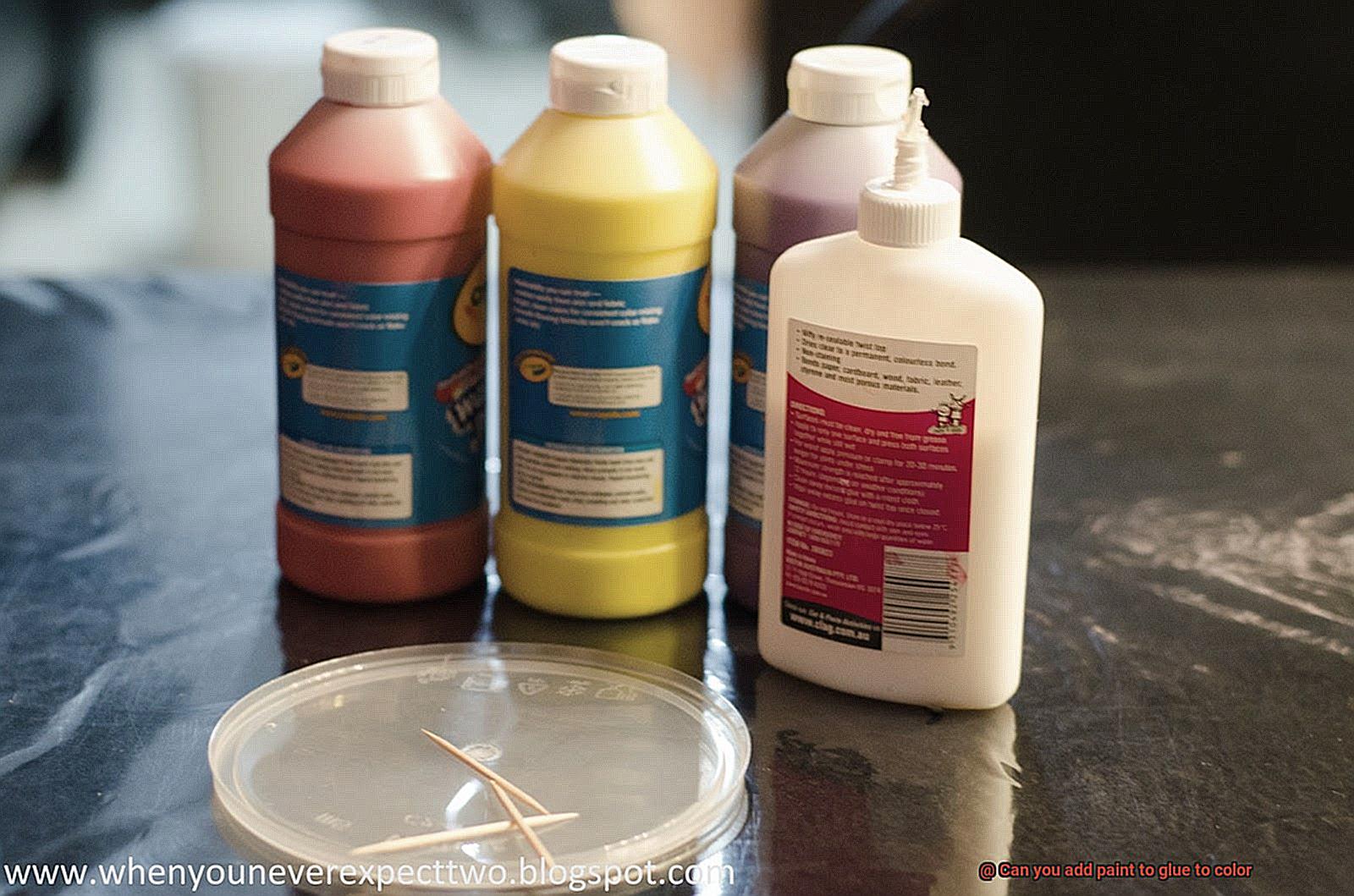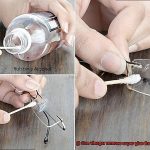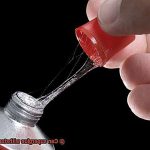Have you ever wondered if it’s possible to add paint to glue and get a colorful adhesive? It might seem like an odd idea, but for crafters and DIY enthusiasts, this question is a common one.
So, can you add paint to glue to color it? The answer is yes, but it’s not as straightforward as just mixing the two substances together. There are different types of glue and paint, each with their own unique properties that can affect the outcome of your project.
In this blog post, we’ll take a deep dive into the world of adding paint to glue. We’ll explore the various types of glue and paint available and discuss how they can be combined to create the desired color and consistency.
Whether you’re looking to jazz up your craft projects or create a custom adhesive for a specific purpose, learning how to add paint to glue is a valuable skill. So let’s roll up our sleeves and get ready to experiment with some colored glue.
What Type of Glue Can Be Colored with Paint?
Contents
- 1 What Type of Glue Can Be Colored with Paint?
- 2 How to Add Paint to Glue
- 2.1 One common method is to mix paint with glue. To get started, pour a small amount of glue into a container and add a little bit of paint. The amount of paint you use will depend on how light or dark you want the color to be. Mix the paint and glue together thoroughly until the color is uniform and there are no lumps. When mixing paint with glue, it’s important to maintain the correct ratio of paint to glue. Too much paint can make the glue too thick and too little may result in a lighter color than desired.
- 2.2 It’s important to use the right type of glue for your project when adding color. Some glues may not mix well with certain types of paint or food coloring and could result in an uneven or inconsistent color. It’s best to test your mixture on a small area before applying it to your project.
- 3 What Type of Paint Should I Use?
- 4 Adjusting the Consistency of the Mixture
- 5 Cautions When Adding Paint to Glue
- 6 Benefits of Adding Paint to Glue
- 7 DIY Projects That Benefit from Colored Glue
- 8 Common Mistakes When Adding Paint to Glue
- 9 Conclusion
If you’re looking to add a pop of color to your adhesive mixture, it’s important to choose the right type of glue that can be colored with paint.

Two types of glue that are perfect for mixing with paint are water-based glues such as white school glue and PVA glue. These versatile adhesives can easily be mixed with acrylic or tempera paint to produce vivid, colorful results. Just remember to measure the ratio of glue to paint carefully to achieve the perfect consistency.
However, not all glues are created equal when it comes to adding color. Solvent-based glues like superglue and epoxy cannot be colored with paint, as they dry clear or opaque and do not allow for any color mixing.
When experimenting with mixing paint and glue, it’s important to start with small amounts of paint before adding it to your main mixture. This will help ensure that you achieve your desired color while still maintaining the adhesive properties of the glue.
Acrylic paint is generally the best choice for mixing with water-based glues, as it is water-soluble and won’t affect the adhesive properties of the glue. However, oil-based paints may not mix well with glue and could cause your mixture to separate or curdle.
How to Add Paint to Glue
Using colored glue is a great way to add some pizzazz to your crafting projects and make them stand out. Fortunately, adding color to glue is easy and cost-effective. In fact, there are several ways to do it, depending on your specific needs.
One common method is to mix paint with glue. To get started, pour a small amount of glue into a container and add a little bit of paint. The amount of paint you use will depend on how light or dark you want the color to be. Mix the paint and glue together thoroughly until the color is uniform and there are no lumps. When mixing paint with glue, it’s important to maintain the correct ratio of paint to glue. Too much paint can make the glue too thick and too little may result in a lighter color than desired.
Another option is to add food coloring to white glue. This method is particularly useful if you’re looking for a specific shade that isn’t available in paint. Simply place a few drops of food coloring into white glue and mix it thoroughly. As with paint, be careful not to use too much food coloring as it can affect the consistency of your glue.
It’s important to use the right type of glue for your project when adding color. Some glues may not mix well with certain types of paint or food coloring and could result in an uneven or inconsistent color. It’s best to test your mixture on a small area before applying it to your project.
When adding paint or food coloring to your glue, acrylic paint is the best type of paint to use as it is water-soluble and dries quickly. Oil-based paints are not recommended as they don’t mix well with water-based glues and take longer to dry.
What Type of Paint Should I Use?
Adding paint to glue is a fantastic way to create unique and striking colors that will make your creations pop. But with so many types of paint on the market, it can be challenging to choose the right one. Fortunately, I’m an expert on this topic, and I’m here to help.
Acrylic paint is an excellent option for mixing with glue. It’s water-based, dries quickly, and easy to clean up. Plus, it has excellent adhesive properties that make it perfect for mixing with glue. With a vast array of colors available, you can easily create custom shades that match your vision.
Oil-based paints are known for their durability and long-lasting finish. However, they require solvents for cleaning up and take longer to dry than acrylic paints. This type of paint may also be more challenging to mix with glue than acrylics.
Watercolor paints are not recommended for mixing with glue as they tend to be too thin and may not adhere well to certain surfaces. Therefore, stick with acrylic or oil-based paints instead.
It’s vital to consider the type of glue you’re using when selecting the right paint. For instance, if you’re using water-based glue, go for a water-based paint like acrylics. If you’re using solvent-based glue, choose oil-based paint.
Opacity and consistency are also essential factors to consider when selecting paint for mixing with glue. If you want a solid color and good coverage, choose an opaque paint. If you’re looking for a more translucent effect, opt for a transparent or semi-transparent paint.
Adjusting the Consistency of the Mixture
First and foremost, it is essential to determine the desired consistency based on the project you’re working on. Whether it’s a thick or thin mixture, adding water or more glue to thin it out or more paint to thicken it up will do the trick. But remember, moderation is key, so add small amounts at a time and mix well before further adjustments.
It is imperative to test the mixture on a small area before applying it to your entire project. This will help you ensure that the consistency and color are just right and that the mixture adheres properly. Different types of paints and glues may react differently when mixed together, so testing is crucial.
Another critical factor to consider when adjusting the consistency is the surface type you will be applying the mixture to. For porous surfaces like wood or fabric, a thinner consistency would allow for better absorption. Conversely, for non-porous surfaces like glass or metal, a thicker consistency would provide better coverage and adhesion.
Cautions When Adding Paint to Glue
Adding paint to glue may seem like a simple task, but there are some important cautions to keep in mind to ensure the best outcome. As an expert on this topic, I’m here to share some tips and tricks with you.
Firstly, it’s crucial to consider the type of paint and glue you’ll be using. Not all paints and adhesives are compatible with each other, so it’s essential to do your research or test a small batch before diving in. Mixing incompatible products could lead to clumping or separation, which can ruin your project.
Another essential factor is the ratio of paint to glue. It’s tempting to add more paint for a richer color, but adding too much paint can weaken the adhesive properties of the glue. Finding the right balance between color and strength is vital for a successful outcome.
Moreover, it’s crucial to consider the purpose of your project. If it will be exposed to moisture or heat, adding paint could compromise its durability. In such cases, it’s best to use a colored glue specifically designed for those conditions.
Lastly, always test your mixture before using it on your project. This can help identify any potential issues with compatibility or strength before it’s too late. Take a small amount of your mixture and apply it to a small area to ensure everything is working as expected.
Benefits of Adding Paint to Glue
Adding paint to your glue can offer a range of benefits that will elevate your creations. As an expert on the topic, I can attest to the many advantages of this technique. Let’s explore them in more detail.
- Adding Color: One of the main benefits of adding paint to glue is that it adds color to your project, which makes it more visually appealing and unique. This is especially useful when working with clear glue that lacks color. By adding paint, you can create a custom color palette that matches your vision for the project.
- Creating Cohesion: Another advantage of adding paint to glue is that it can help create a more cohesive look. When the color of the glue matches other elements of your project, such as a vase or flowers, it can give your creation a seamless and professional-looking finish. The paint and glue work together to create a cohesive design that ties everything together.
- Improved Bond: Adding paint to glue can also improve the strength and durability of your project. When working with porous materials like paper or fabric, the paint can seep into the fibers and create a stronger bond than clear glue alone. This ensures that your project will last longer and stand up to wear and tear.
- Compatibility: It’s essential to consider compatibility between products when using this technique. Make sure you’re using paint and glue that are meant to work together. Otherwise, you may experience issues like clumping or separation.
- Balance: Strike a balance between color and strength when adding paint to glue. Too much paint can weaken the bond between materials, while too little may not create enough color impact. It’s best to experiment with small amounts before committing to larger projects.
- Testing: Always test before applying. Apply a small amount of the mixture to a scrap piece of material before using it on your actual project. This will ensure you’re happy with the color and strength before committing to the final product.

DIY Projects That Benefit from Colored Glue
Let me tell you, colored glue is a game-changer. By adding paint to your glue, you can create a thicker consistency that opens up a whole new world of possibilities.
Let’s dive into some exciting DIY projects that can benefit from colored glue:
- Slime-making: Who doesn’t love slime? With the addition of food coloring or paint to clear glue, you can take your slime-making to the next level. The thicker consistency of colored glue makes it easier to achieve the perfect slime texture, and the range of colors you can create is endless.
- Decorative jars: Colored glue can be used to create stunning designs on glass jars. Mix paint with clear glue, apply it to the jar in your desired pattern, and watch as the colors come to life. You’ll have a beautiful and personalized vase or candle holder in no time.
- Paper crafts: Add an extra pop of color to your paper crafts by mixing paint with white school glue. The possibilities are endless – use it for embellishments, decorations, or even as a sealant. You can create a range of colors for paper embellishments and decorations that will make your project stand out.
- Fabric dyeing: Adding paint to glue can also create a unique tie-dye effect on fabric. Apply the mixture in your desired pattern before dyeing for a one-of-a-kind design. It’s an easy way to get a unique look without using liquid dyes.
Common Mistakes When Adding Paint to Glue
It may seem like a simple task, but there are some common mistakes that people often make when mixing these two materials together. As an expert on the topic, I’m here to help you avoid these pitfalls and achieve a successful outcome for your project.
Firstly, one of the most common mistakes is adding too much paint to the glue mixture. While it may be tempting to go all out with the color, too much paint can result in a runny and uneven mixture that is difficult to work with. This can lead to poor adhesion, ruining your hard work. So, it’s best to stick to a ratio of one part paint to three parts glue for a consistent and manageable mixture.
Another mistake is using the wrong type of paint for your project. Not all paints are created equal and some may not be compatible with certain types of glue. This can weaken the bond between the materials or even cause the glue to break down over time. To avoid this, choose a paint that is specifically designed for use with the type of glue you are using.
Properly mixing the paint and glue together is also crucial. You want to make sure that they are fully blended with no lumps or clumps in the mixture. An uneven application can result in poor adhesion, which can ruin the look of your project. So take your time and mix thoroughly.
Finally, testing the mixture before applying it to the entire surface is essential. It’s crucial to identify any issues with the mixture before it’s too late and you have applied it all over your project. Testing on a small, inconspicuous area can help ensure a consistent application and prevent any surprises later on.
Conclusion
To sum up, infusing paint with glue is an exceptional method to add a pop of color and unleash your creative prowess in DIY projects. Nevertheless, it’s imperative to select the appropriate glue and paint for your project and maintain the right ratio of paint to glue.
Water-based glues like white school glue and PVA glue are ideal for blending with acrylic or tempera paint, while solvent-based adhesives such as superglue and epoxy cannot be tinted with paint.
Before applying your mixture to your project, it’s crucial to test it on a small area first when adding paint or food coloring to your adhesive. Acrylic paints generally work best when mixed with water-based glues, whereas oil-based paints may not blend well with glue.
Moreover, adjusting the consistency of the mixture is vital based on the surface you’ll apply it to. You can thin out the mixture by adding water or more glue while thickening it up by adding more paint.
Although adding color to glue has numerous advantages such as creating cohesion and enhancing bonds, people often make common mistakes when mixing these two materials together. Avoid overdoing the amount of paint used, selecting the wrong type of paint for your project, applying unevenly, and not testing before using it on your entire project.






